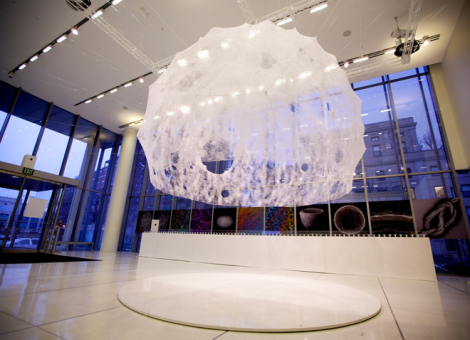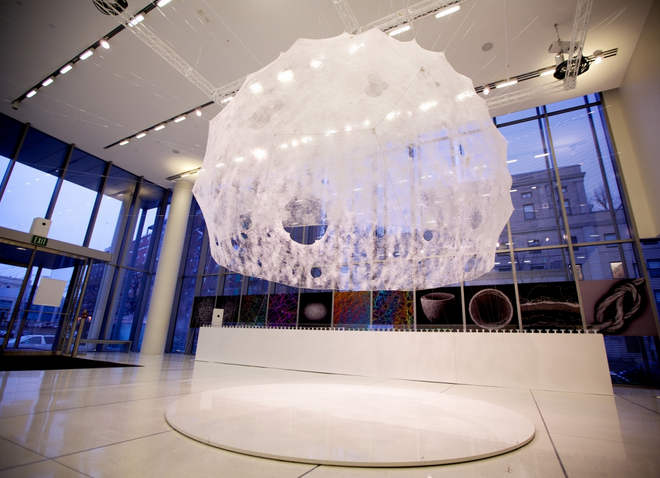
Steven Keating
We expect MIT researchers to be innovators in 3D printing. We do not necessarily expect the same of caterpillars. But this spooky pavilion at MIT’s Media Lab was a collaboration between the researchers who designed the structure, the robots who built the framework, and the silkworms who then basically extruded the whole thing out of their salivary glands.
The lab’s Mediated Matter team, headed by Neri Oxman, discovered that it was possible to influence the way silkworms spun their thread. Using that research, Oxman designed a base for the pavilion on the computer that would influence the silkworms to produce just the sort of texture and patterns she was after. A robot strung a complicated series of threads on a metal scaffolding. And then they turned 6,500 silkworms loose on the dome.
They swarmed over the structure’s surface and spun silk threads that ultimately created a dome that was equal parts Buckminster Fuller and Charlotte’s Web. …
Most 3-D printers today would have difficulty printing something larger than the steering wheel of a car, but with a little help, these “MakerBugs” can build structures the size of small houses. The process is as environmentally friendly as it could possibly be — the worms transform White Mulberry leaves into building material, their creations biodegrade over time, and when the job is done the worms turn into moths and fly away, leaving enough eggs behind to create approximately 250 more structures.
The pavilion itself is a little bit eerie; it looks like someone tried to build a cloud to float away in and gave up. But there’s actually a practical application for these ideas: “[I]t’s possible to imagine a system like this being deployed in the aftermath of a natural disaster to build environmentally friendly shelters for refugees — if they could get over the slightly terrifying notion of living in what looks to be a giant spider web,” Wired says. More terrifying: coming upon a field of abandoned structures like these. At least the silk part eventually biodegrades.



